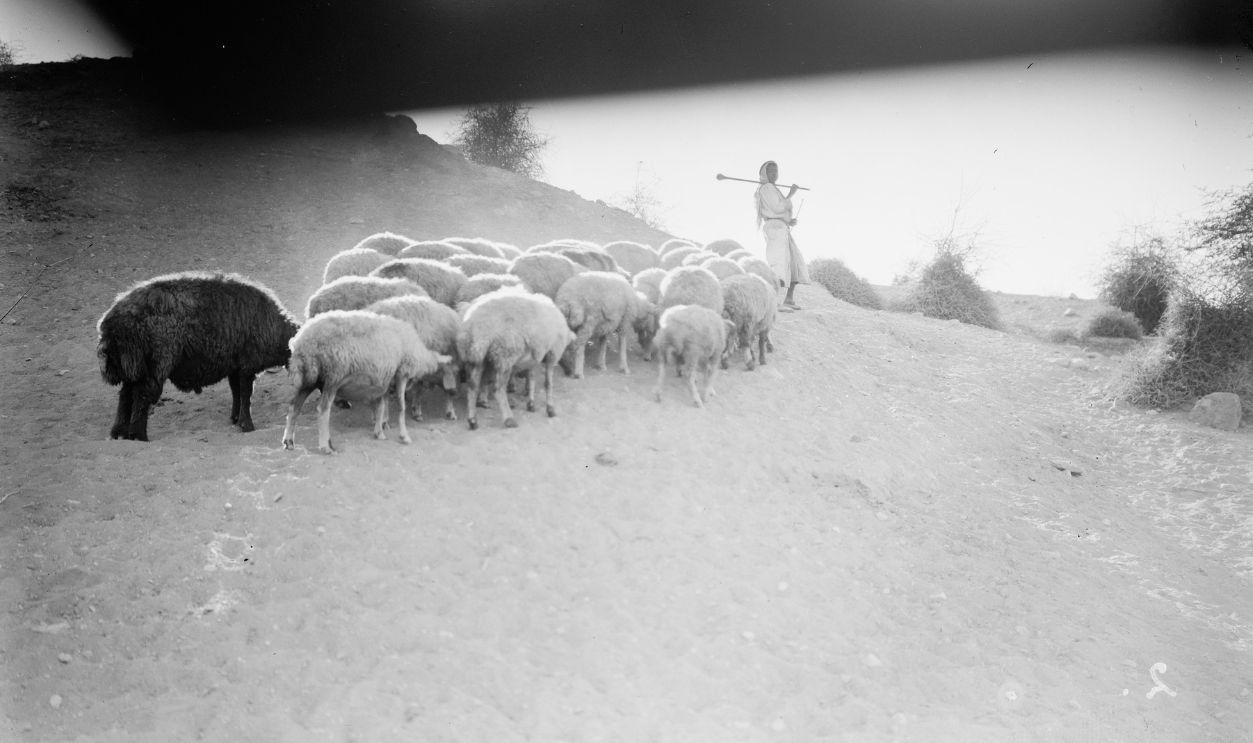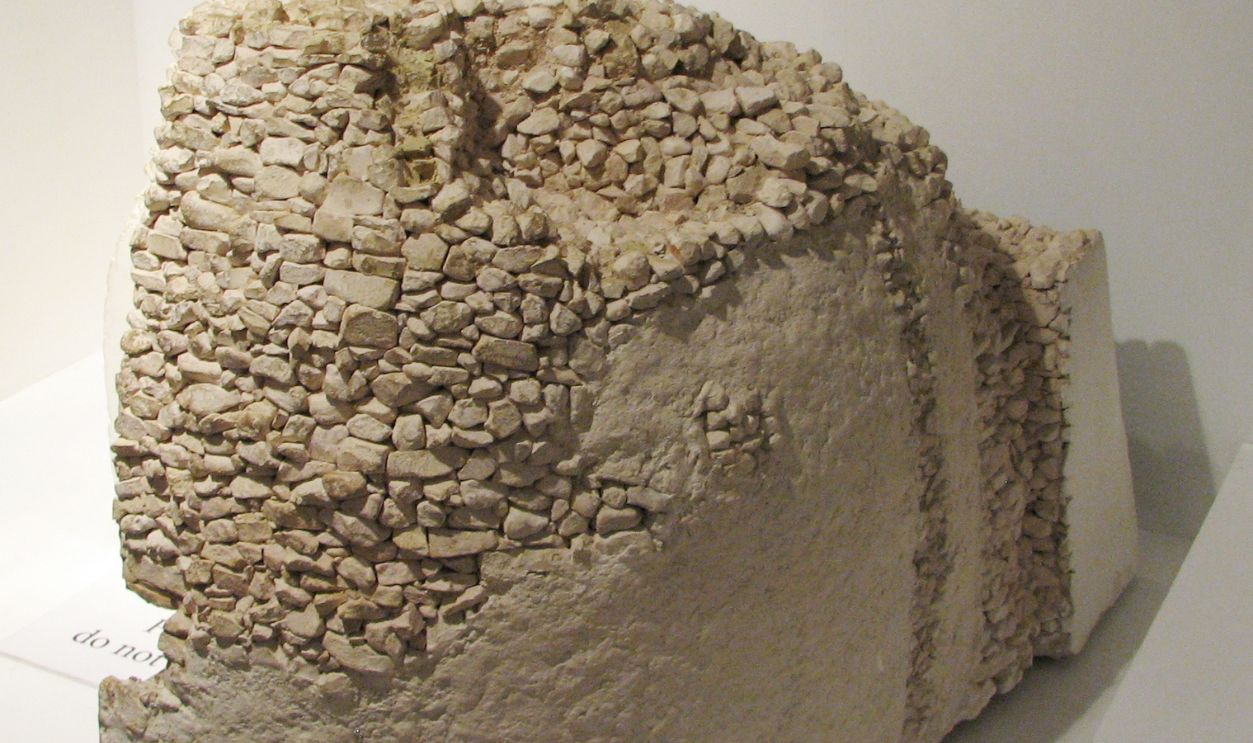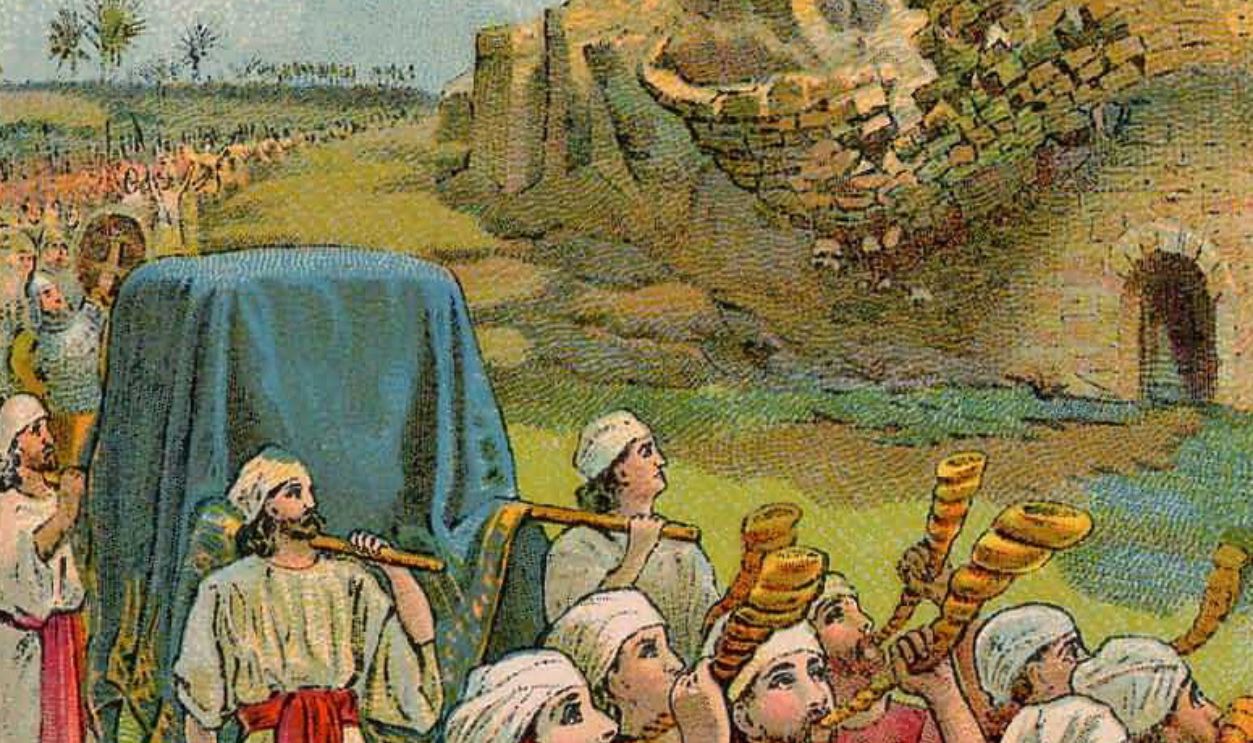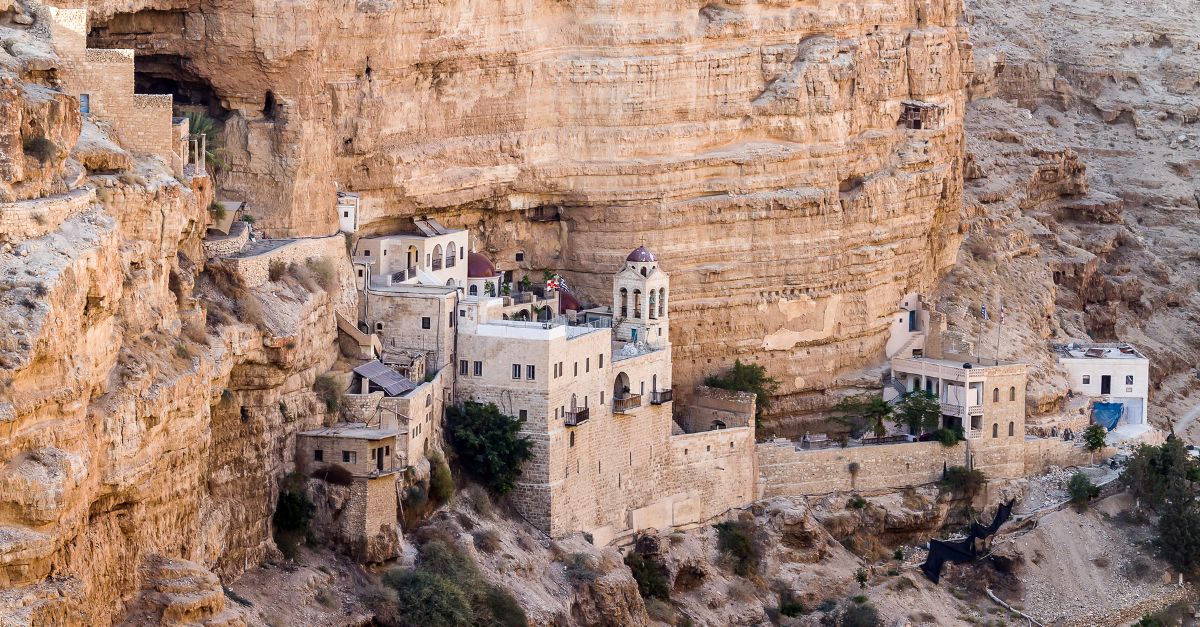No Shortage Of Drama
Jericho, a town on the West Bank of the Jordan River in modern Palestine, may not technically be the first city. Still, it is undoubtedly the world’s oldest continually inhabited settlement. As you can imagine, Jericho's rich history includes a ton blood and scandal.
 Biblical Significance Of The City Of Palms
Biblical Significance Of The City Of Palms
As the Book of Joshua mentions, Jericho is the first city Joshua attacks after crossing the Jordan River. The ancient tale recounts how the Israelites circled the city for seven days before the wall of Jericho crumbled at the sound of their horns.
 Chester Beatty Library, Wikimedia CommonsOlder Than The Bible's Story
Chester Beatty Library, Wikimedia CommonsOlder Than The Bible's Story
But what's interesting is that Jericho existed long before its appearance in the Bible. It has withstood the trials for millennia as one of the first cities built by humans in the history of civilization. How do we know this?
 Robert Hoetink, ShutterstockEarly Excavations
Robert Hoetink, ShutterstockEarly Excavations
In the mid-19th century, Jericho came under the radar of leading archeologists. Charles Warren led the first excavation of the city in 1868. Under his guidance, the team worked relentlessly to uncover what lay beneath a well-situated settlement. A few wondrous discoveries emerged.
 Herbert Rose Barraud of London, Wikimedia CommonsThe Focus Of The First Excavation
Herbert Rose Barraud of London, Wikimedia CommonsThe Focus Of The First Excavation
The excavation primarily focused on a hill, Tell es-Sultan, known today as Tel Jericho. Based on its proximity to the large spring of Ein es-Sultan, Warren deemed it the site of Ancient Jericho. This discovery of the settlement became a milestone in his archeological achievements.
 Fullo88 at Italian Wikipedia, Wikimedia CommonsWarren’s Relentless Work At Temple Mount
Fullo88 at Italian Wikipedia, Wikimedia CommonsWarren’s Relentless Work At Temple Mount
Warren's interest in the Holy Land or Biblical Palestine further led to the excavation of significant areas surrounding the Temple Mount. Although the site was initially off-limits to him, undeterred, he plumbed the depths around its retaining walls to get to some pretty revealing historical secrets.
 Andrew Shiva, Wikipedia CommonsStumbling Upon The Water Shaft
Andrew Shiva, Wikipedia CommonsStumbling Upon The Water Shaft
The daring exploration resulted in his team finding a water shaft, later christened Warren's Shaft. The vertical natural shaft led below to a pool fed by the nearby Gihon Spring, which implied a bounteous water supply. They also stumbled upon a series of tunnels beneath the temple.
 David Roberts, Wikimedia CommonsFurther Investigations By German Archaeologists
David Roberts, Wikimedia CommonsFurther Investigations By German Archaeologists
Four decades after Warren left the archaeological site of Jericho, Germans Ernst Sellin and Carl Watzinger visited in 1907 to investigate. Additional discoveries during their expedition cemented their belief that the city hid much more of its past than had been revealed thus far.
 Here, Wikimedia CommonsExcavations Under Kathleen Kenyon
Here, Wikimedia CommonsExcavations Under Kathleen Kenyon
History needed Kathleen Kenyon's brilliance to finally put a date on Jericho's long existence on Earth. In 1952, the British archeologist arrived on site, rolled her sleeves, and got to work for the next six years. What followed her determined explorations shocked the world.
 UCL Institute of Archaeology, CC BY 4.0 , Wikimedia CommonsTrue Age Of Jericho
UCL Institute of Archaeology, CC BY 4.0 , Wikimedia CommonsTrue Age Of Jericho
Like those before her, Kenyon focused on Tell es-Sultan, the hill on which Jericho sat. Due to several of her discoveries at the ancient site, the world realized that Jericho dates back to 9000 BC, around 11,000 years before the present day.
More Of Her Incredible Findings
She found broken walls, burnt grains in jars, pottery sherds, destroyed towers, and more. Kathleen's detailed examination of the sherds led her to believe that Jericho's downfall happened in 1550 BC rather than 1400 BC, as depicted before her findings.
 Daniel Case, CC BY-SA 3.0, Wikimedia CommonsHer Controversial Excavation Techniques
Daniel Case, CC BY-SA 3.0, Wikimedia CommonsHer Controversial Excavation Techniques
While many before Kenyon examined the complete pieces of pottery, she was the first one to study the broken shreds instead. Her controversial use of stratigraphy, a new form of excavation to arrive at the key findings, led to some backlash from the religious community.
 Ethan Doyle White, CC BY-SA 4.0, Wikimedia CommonsThe Era Of Mesolithic Hunters
Ethan Doyle White, CC BY-SA 4.0, Wikimedia CommonsThe Era Of Mesolithic Hunters
Before Jericho became habitable, it was frequented by Natufian hunters from 15,000 to 11,500 years ago. Unlike the hunter-gatherers who lived a stringent nomadic lifestyle, they led a semi-sedentary life. They were the reason Jericho became the city it was destined to be.
The Days Of Younger Dryas
The world grappled with the Younger Dryas, or the Ice Age, during 10000 BCE, roughly 12,900 to 11,600 years before the present. No place was habitable due to glacial temperatures and drought. Even Jericho was only a temporary camping ground for hunters.
 Lake Clark National Park & Preserve, Flickr
Lake Clark National Park & Preserve, Flickr
The End Of Younger Dryas
When the Ice Age ended around 9,600 BCE, the warmer climate settled in. During this time, Jericho became a likely abode for a permanent settlement for the hunger gatherers with its abundant freshwater springs. The town slowly turned into a year-round habitation for many.
 Immanuel Giel, CC BY-SA 4.0, Wikimedia CommonsSigns Of First Settlement
Immanuel Giel, CC BY-SA 4.0, Wikimedia CommonsSigns Of First Settlement
By 9,500 BC, people started putting roots in Tell es-Sultan, the hill with a continuous supply of spring water from Elisha's Spring. Located a few kilometers north of present-day Jericho, it soon became the earliest known permanent settlement.
 Dāvis Kļaviņš, FlickrThe Rise Of Permanent Structures
Dāvis Kļaviņš, FlickrThe Rise Of Permanent Structures
In the next 100 years, more than 70 houses sprang up in Jericho. Around a thousand inhabitants had settled in circular abodes about 3.5 meters high and 5 meters in diameter. The dwellings had 2-meter-thick walls built with straw and clay.
 Zoltan Kluger, Wikimedia CommonsPre-Pottery Neolithic (PPN)
Zoltan Kluger, Wikimedia CommonsPre-Pottery Neolithic (PPN)
As the name denotes, this era did not yet see pottery. PPN lasted 3000 years until 6,500 BC, and this period has been further classified under PPNA, the older one datewise, followed by PPNB. Both witnessed a paradigm shift in the way people lived.
 Teomancimit, CC BY-SA 3.0, Wikimedia CommonsPPNA Or The Proto-Jericho (8350 BCE to 7370 BCE)
Teomancimit, CC BY-SA 3.0, Wikimedia CommonsPPNA Or The Proto-Jericho (8350 BCE to 7370 BCE)
In the early 9th millennium BC, a large settlement would have a population of between 3000 and 200 inhabitants. It was a period in which the hunter-gatherer style of living was still prevalent, focusing on tools made of wood or stone.
 Gary Todd, FlickrA Shift To Animal Husbandry And Agriculture
Gary Todd, FlickrA Shift To Animal Husbandry And Agriculture
From relying on hunting wild game for survival to the early development of animal husbandry, the first settlers of Jericho came a long way. Soon, wild grain domestication began, leading to an agricultural revolution. They began growing pulses, Emmer wheat, and barley.
 Matson Collection, Wikimedia CommonsSultanian Settlement
Matson Collection, Wikimedia CommonsSultanian Settlement
Sometimes called Sultanian, the PPNA settlement covered an area of 40,000 square meters and was surrounded by a wall as high as 3.6 meters with a base of 1.8 meters. This stone wall was one of the oldest to be discovered.
 A. Sobkowski, Wikimedia CommonsTower Of Jericho
A. Sobkowski, Wikimedia CommonsTower Of Jericho
Archaeologists found evidence of an 8.5-meter-high stone tower built in 8000 BC to one side of the wall. For that era, it was an engineering marvel to have been able to construct something that high. It is now rightfully considered the oldest monument of humanity.
 Immanuelle, CC BY-SA 4.0, Wikimedia CommonsThe Construction Of The Tower
Immanuelle, CC BY-SA 4.0, Wikimedia CommonsThe Construction Of The Tower
According to the estimation of the historians, the tower took over 10,400 working days to complete. It was built with undressed stones and had a 22-step staircase inside. The marvel of the tower doesn't cease here; the archaeologists uncovered more fascinating facts about its construction.
 Reinhard Dietrich, Wikimedia CommonsAn Early Example Of Archaeoastronomy
Reinhard Dietrich, Wikimedia CommonsAn Early Example Of Archaeoastronomy
Two archeologists from Tel Aviv University, Ran Barkai and Roy Liran, used computer modeling to study the purpose of the tower. To their awe, the shadow of the neighboring mountains hit the tower on the sunset during the summer solstice and slowly spread across the town.
 Eugene R Thieszen , ShutterStockWhat Was The Purpose Of The Tower?
Eugene R Thieszen , ShutterStockWhat Was The Purpose Of The Tower?
With no evident human invasion or need for defense, they argued that it was built to instill a sense of awe and to inspire people to adopt a more challenging way of life. They felt it worked to bring the settlers together to embrace communal living.
 Hanay, CC BY-SA 3.0, Wikimedia CommonsEvidence Of Power Struggles
Hanay, CC BY-SA 3.0, Wikimedia CommonsEvidence Of Power Struggles
The tower could have easily been part of the fortification system against floods. However, the excavation of twelve skeletons from inside the tower suggests power struggles between groups. The residents might have been pressured into building the structure out of fear.
 Mary Harrsch, CC BY 2.0, Wikimedia CommonsPre-Pottery Neolithic B (7220 BCE and 5850 BCE)
Mary Harrsch, CC BY 2.0, Wikimedia CommonsPre-Pottery Neolithic B (7220 BCE and 5850 BCE)
During the first few centuries of this period, the site was abandoned for reasons unknown. Around 6800 BCE, a new set of people began arriving from new centers, probably from Northern Syria. This period saw advancements in technology, and the population increased as well.
 Dr. Juan Antonion Sánchez Priego, Wikimedia CommonsThe Second Settlement
Dr. Juan Antonion Sánchez Priego, Wikimedia CommonsThe Second Settlement
In due course, the second settlement of invaders and original inhabitants started cultivating various plants and domesticating animals such as sheep. There was still no sign of pottery, while agriculture and irrigation farming stayed highly relevant during this era.
 Bibliographisches Institut, Wikimedia CommonsThe Construction Of New Buildings
Bibliographisches Institut, Wikimedia CommonsThe Construction Of New Buildings
On the ruins of the once abandoned lands, the new settlers built rectilinear buildings instead of circular dwellings. These were mud-brick constructions, with each building consisting of several rooms surrounding the central courtyard. Cooking took place in these 7-meter-square courtyards.
 Abraham at Polish Wikipedia, Wikimedia CommonsOther Known Advancements
Abraham at Polish Wikipedia, Wikimedia CommonsOther Known Advancements
While the courtyard floor was made of clay, the rooms mainly had lime-terrazzo floors. People were skilled at carving dishes and bowls out of soft limestone and making hammerstones and axes out of greenstone. They also included flints in the shapes of the arrowheads.
 José-Manuel Benito Álvarez, CC BY-SA 2.5 , Wikimedia CommonsEmergence Of A Cult
José-Manuel Benito Álvarez, CC BY-SA 2.5 , Wikimedia CommonsEmergence Of A Cult
Archeologists found evidence of religion in the form of a cult similar to the practices in Çatalhöyük during that time. The bizarre ritual had the people keep the heads of the deceased relatives, paint their features on the skull, and stuff shells into their eye sockets.
 Cicero Moraes, Thiago Leite Beaini, Moacir Elias Santos, CC BY 4.0, Wikimedia CommonsThe Rituals Did Not End There
Cicero Moraes, Thiago Leite Beaini, Moacir Elias Santos, CC BY 4.0, Wikimedia CommonsThe Rituals Did Not End There
There was a belief that the heads were the spiritual centers, and the rest of the body was left outside their homes to decompose. Later, the bodies were interred and left under the floorboards of the house, which is how archeologists found them centuries later.
 Zunkir, CC BY-SA 4.0 , Wikimedia CommonsThe End Of Neolithic Jericho
Zunkir, CC BY-SA 4.0 , Wikimedia CommonsThe End Of Neolithic Jericho
This second settlement was in Jericho until a massive earthquake in 6000 BC shifted the Spring of Ein es-Sultan. It affected the city's primary water source, probably causing the end of Neolithic Jericho. There was little to no evidence of occupancy for 1000 years.
 Leo Wehrli, CC BY-SA 4.0, Wikimedia CommonsPeriodical Settlements In Jericho
Leo Wehrli, CC BY-SA 4.0, Wikimedia CommonsPeriodical Settlements In Jericho
From 5000 BC onward until well into the Bronze Age, Jericho attracted a spattering of settlements in the villages on the northern side. For nearly 2000 years, jobs were sparse, with many living in sunken huts and relying on their primitive pottery-making skills.
 Zde, CC BY-SA 4.0, Wikimedia CommonsRe-Appearance Of Urban Life
Zde, CC BY-SA 4.0, Wikimedia CommonsRe-Appearance Of Urban Life
By the end of the 4th millennium BC, the urban culture started appearing in Jericho as it did in the rest of Palestine. The place became a walled town again, with the walls being rebuilt many times over a thousand years.
 TUBS, CC BY-SA 3.0, Wikimedia CommonsThe Late Bronze Age
TUBS, CC BY-SA 3.0, Wikimedia CommonsThe Late Bronze Age
With the Amorites probably occupying the villages so far, the Canaanites soon followed suit. By 1900 BC, Jericho became a small but prominent town in the Canaan region. The excavations later gave a glimpse of their homes and the furniture that was found in their tombs.
 Gustave Doré, Wikimedia CommonsJericho Enjoyed Significant Prominence
Gustave Doré, Wikimedia CommonsJericho Enjoyed Significant Prominence
For nearly 150 years until 1550 BCE, Jericho rose to its most significant prominence. The city even had two walls forming a double enclosure to protect it. The prosperity resulted from the many aristocrats who used chariots known as Maryannu in the neighboring state of Mitannite.
 Charles Wilkinson, CC0, Wikimedia CommonsThe Fall Of Jericho
Charles Wilkinson, CC0, Wikimedia CommonsThe Fall Of Jericho
Toward the end of the 16th century, in 1573 BCE, the wall of Jericho collapsed due to an earth-shattering earthquake. The city fell into ruins soon after, with charred wood found later as evidence of a total burnout. Jericho remained unoccupied for a long time.
 The Providence Lithograph Company, Wikimedia CommonsThe Battle Of Jericho
The Providence Lithograph Company, Wikimedia CommonsThe Battle Of Jericho
The timeline of Jericho's destruction and existence, established by the archaeologists, especially Kathleen Kenyon, clashes with the Bible’s story of the Israelites attacking the city's walls. Jericho was, in fact, abandoned at the time of the supposed battle, as presented in the Book of Joshua.
 Wikimedia CommonsIron Age Resurrection
Wikimedia CommonsIron Age Resurrection
After Jericho collapsed completely, it remained in ruins until it was rebuilt in the 9th century BC during the Iron Age. The city found its footing for over three centuries, but the Babylonians destroyed it in the 6th century during their invasion of Judah.
 Metropolitan Museum of Art, CC0, Wikimedia CommonsUnder The Rule Of Babylonians And Persians
Metropolitan Museum of Art, CC0, Wikimedia CommonsUnder The Rule Of Babylonians And Persians
Jericho was under Babylonian rule for 47 years before the Persians conquered Babylon in 598 BCE. The new rulers wanted the place rebuilt, and fresh buildings sprang from the ruins. This life lasted for 200 years before it switched hands once again.
 Hjaltland Collection, CC BY-SA 3.0, Wikimedia CommonsPersonal Estate Of Alexander The Great
Hjaltland Collection, CC BY-SA 3.0, Wikimedia CommonsPersonal Estate Of Alexander The Great
Between 336 BCE and 323 BCE, Jericho became Alexander the Great's private estate for a few years. It was later integrated into the Seleucid Empire, a successor state to his vast empire. Jericho served as its Garden City until 37 BCE.
 Wikimedia CommonsThe Roman Conquest
Wikimedia CommonsThe Roman Conquest
Post the Roman Conquest, Marc Anthony, impressed with the city, gifted it to Cleopatra. However, Jericho's ownership shifted to King Herod after their joint demise. He built a hippodrome and a palace adjacent to the city during his reign.
 Lawrence Alma-Tadema, Wikimedia CommonsChanging Hands Multiple Times
Lawrence Alma-Tadema, Wikimedia CommonsChanging Hands Multiple Times
Over the centuries that followed, Jericho changed hands from one ruler to another, from the Crusaders to the Ottomans. Despite several ruins and repeated resurrections, the city has survived and thrived. It became a prosperous land during King Herod's reign.
 Wikimedia CommonsModern Day Jericho
Wikimedia CommonsModern Day Jericho
Well-known as the City of Palms, Jericho, with a population of 20,000, is a must-visit for tourists. It still preserves the remnants of a bygone era worth reminiscing over. You can see memorable places such as Tel es-Sultan and Mount of Temptation Monastery.










